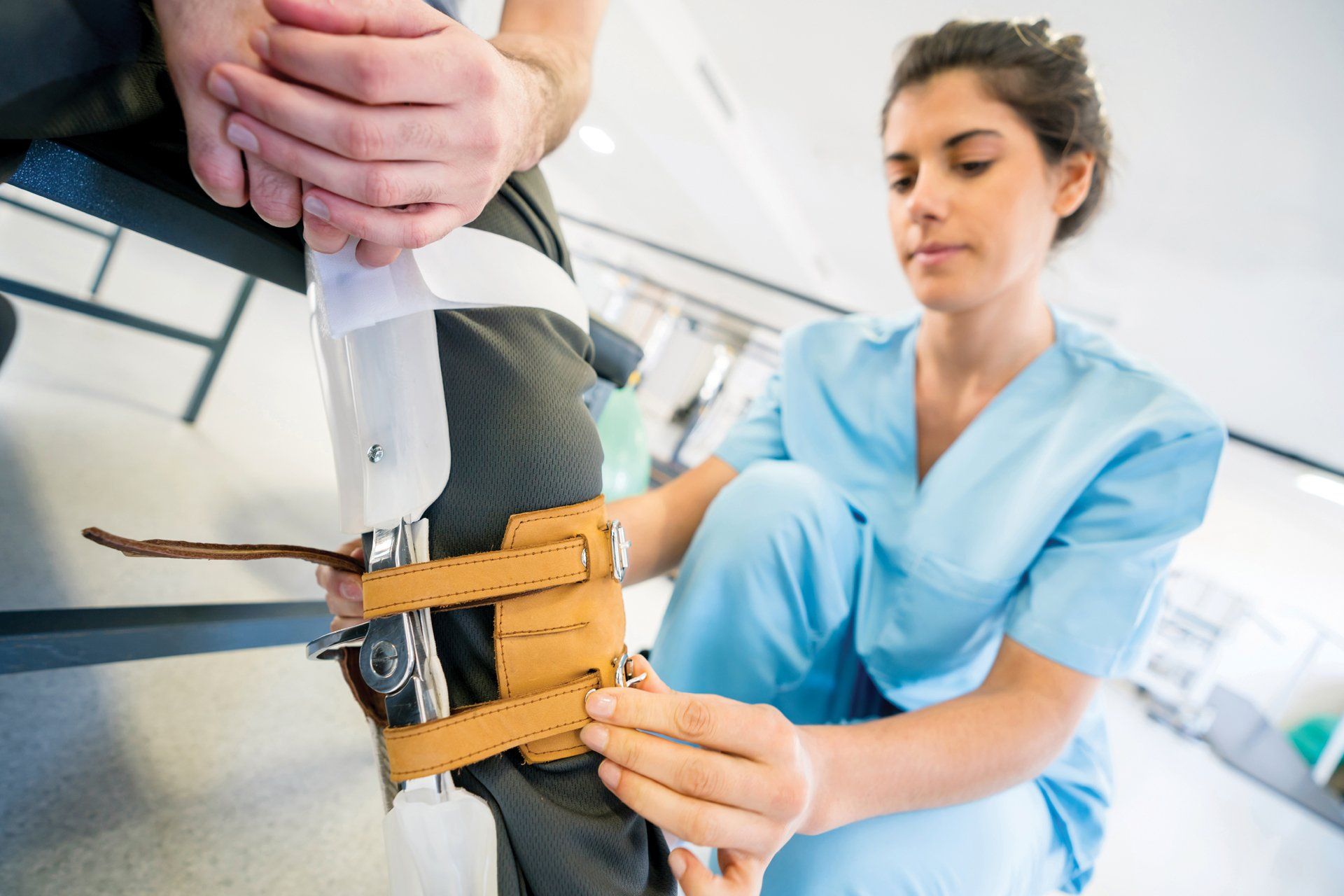Patient Guide
Key Information for Your Stay

Orthotic & Prosthetic Services
Orthotic & Prosthetic Services
Orthotics
Orthotic devices are braces or splints
you use on various parts of your
body to correct medical conditions
or support weak muscles. Different
kinds of devices are made for areas
below your waist, above your waist
and your spine.
Doctors often suggest shoe or
custom-molded inserts to help
relieve common foot and ankle
issues like:
- bunions
- flat feet
- plantar fasciitis
- arthritis
These inserts act like shock
absorbers and reduce pain, position
your foot better and relieve pressure.
And by correcting foot issues, you
may find other relief as well. Studies
show that many back problems can
be linked to foot imbalance issues.
Doctors also prescribe orthotics for
treatment of scoliosis and osteoporosis, plus a variety of
sprains and other soft tissue injuries.
If you’re looking for extra cushioning
and comfort, then you can purchase
over-the-counter orthotics at drug
or running stores. For more serious
issues, your doctor will order custom
orthotics, and usually insurance will
help cover the cost of the prescription.
Prosthetics
A prosthetic is a man-made body
part that helps you regain the use
of a limb. For example, if your leg is
amputated below your knee, you can
learn to walk again with a prosthetic.
Common Prosthetic Questions and Answers
When will I get the prosthesis?
Usually, you will get measurements
and a fitting several weeks after
surgery when the wound is healed
and the tissue swelling goes down.
Then you will have several more
fittings to make sure you get the
best fit and comfort for your needs.
How long will it last?
Depending on your age and how
active you are, your prosthesis
can last from several months to
several years.
What if it doesn’t fit right?
You will make several visits for
adjustments plus get training
from a therapist. Make sure you
communicate honestly about
how the prosthesis feels and ask
questions.
Additional Resources:
American Academy of Orthopaedic Surgeons:
orthoinfo.aaos.org
American Podiatric Medical Association:
www.apma.org
Amputee Coalition:
The AudioEye Trusted Certification represents a commitment to accessibility and digital inclusion.
© 2025
Patient Guide Solutions, LLC
All Rights Reserved
